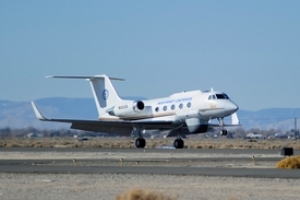Northrop Grumman has initiated flight tests for the premier multifunction active sensor (MFAS) radar to be delivered for the U.S. Navy's MQ-4C Broad Area Maritime Surveillance Unmanned Aircraft System (BAMS UAS).
 Northrop Grumman's G-II test bed aircraft, the first MQ-4C Broad Area Maritime Surveillance Unmanned Aircraft System (BAMS UAS)
Northrop Grumman's G-II test bed aircraft, the first MQ-4C Broad Area Maritime Surveillance Unmanned Aircraft System (BAMS UAS)
Following the achievement of ground station testing in November, the company's Palmdale–based Gulfstream II testbed aircraft incorporated the MFAS sensor for flight testing. The first BAMS aircraft is ready to take off from the company's Palmdale Manufacturing Center in California.
The testing of the MFAS radar will take place in three phases, which include radar integration, mode integration with refinement, and data collection. In each phase, the configurations and capabilities of the radar will be scrutinized, qualifying it for Navy operations such as representation of maritime surface traffic.
The MFAS sensor is equipped with a rotating sensor in-built with electronic scanning. It offers mode agility to fluctuate between various surveillance methods, encompassing inverse-synthetic-aperture radar (ISAR) mode for classifying ships and maritime-surface-search (MSS) mode for tracking maritime targets. Image-while-scan capability is used to leverage rapid ISAR functions in MSS scans such as ISAR snapshot and high- range resolution.
Two synthetic aperture radar (SAR) modes such as strip SAR are used as ground searchers for images along a fixed line, whereas spot SAR involves images in the ground and stationary targets. This is followed by the transfer of data in the form of tracks, and single frame and high resolution snap shots to ground station units.
At present, maritime sensors have been incorporated in Block 10 RQ-4 version of the aircraft, BAMS-D, which is being deployed by the U.S. Navy.